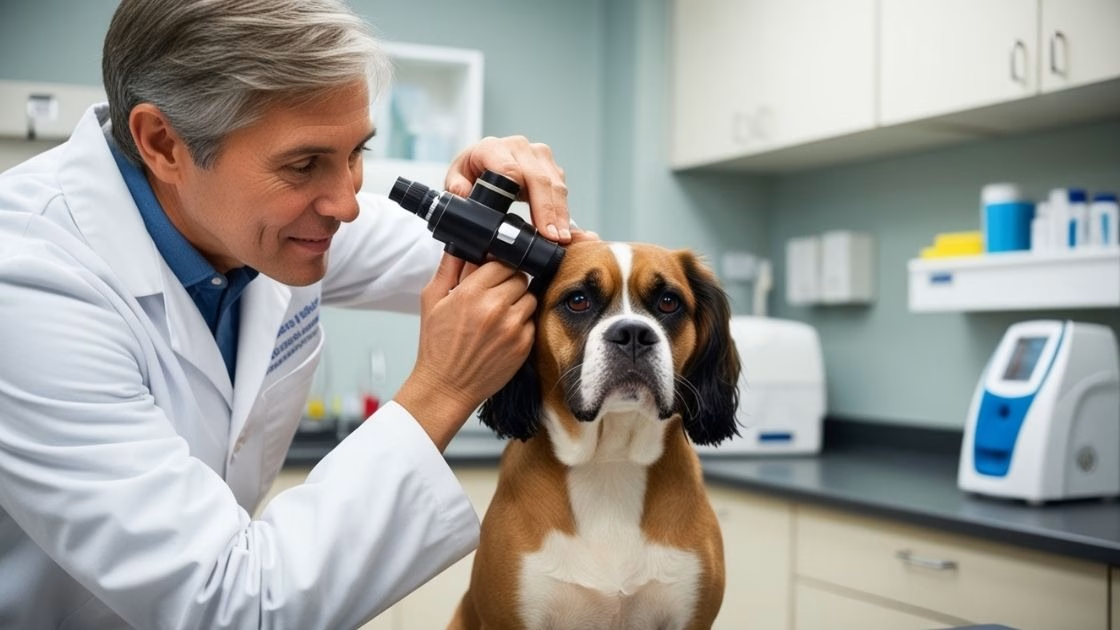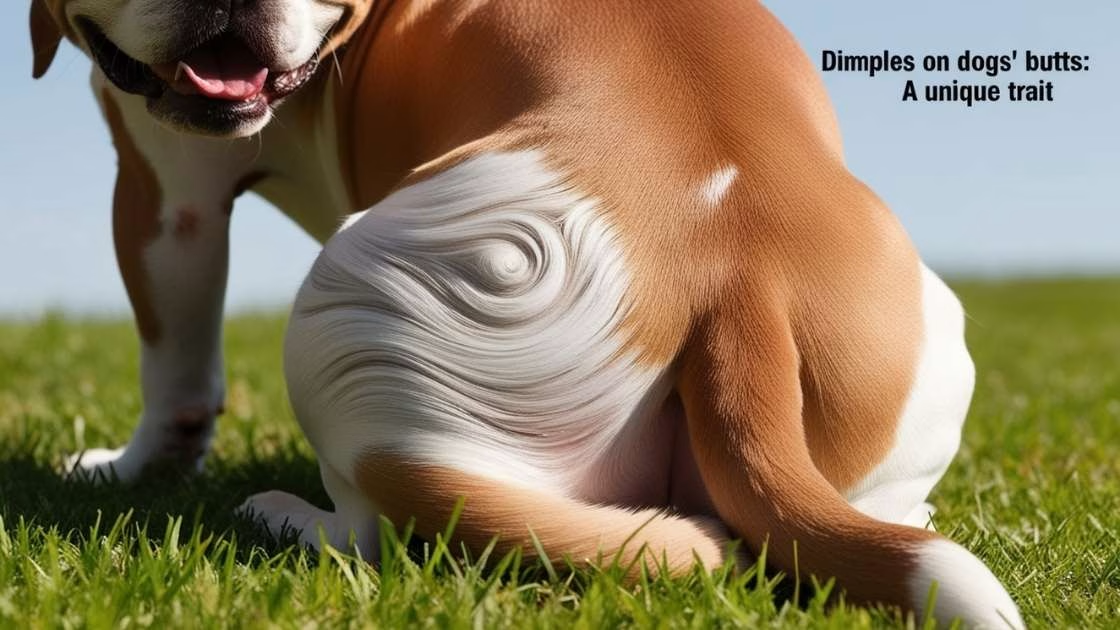A case of conjunctival epithelial inclusion cyst in dog, an unusual presentation of an uncommon condition treated effectively with Oedine eyedrops . Being a dog owner, I do know how painful it is to find or be faced with an eye problem on any of your beloved pets much alone one that is rare such as the conjunctival epithelial inclusion cyst.
The good news is that this condition often may be a temporary discomfort that can be relieved and eradicated with proper intervention. If it is just an itch in the eye, or it’s something more chronic like loss of vision, there is always a solution.
In this one, I give you tips on this condition from its causes and signs as well as the best treatment such as the use of eye drops. Together, I tell you how you may be able to bring your dog some relief and save his or her vision. Okay, let’s empower this and get your puppy rejoicing the beauty of the world once again!
Key Takeaways
- Conjunctival epithelial inclusion cysts are not a death sentence for dogs provided that they are treated by a vet as early as possible.
- A medical treatment for dogs with this problem using eyedrops to manage inflammation, infection, and healing.
- They consist of inflammation, oedema and alterations in your dog’s demeanour due to pain.
- There are other tests as well; some includes the use of fluorescein stain as well as veterinary ocular exams.
- Measures B involves eye care practice, safety of eyes from injuries and early treatment of several diseases affecting the eyes.
What Is Canine Eye: Anatomy and Function
The canine eye is thus a segmented body part aimed at capturing and interpreting visual data within the existing environment. Before analyzing conjunctival epithelial inclusion cysts, the structural and functional segments of the eye must be discussed.
Key Structures
- Cornea: The outermost layer is transparent in nature.
- Conjunctiva: A very delicate structure that is on the eye’s surface and in the inner edge of the eyelid.
- Epithelium: A protective layer named the epithelium of the cornea.
- Eyelid: Protects the eye and distributes the tear layer.
- Third Eyelid: Offers extra safeguard and the generation of tears.
Functions of the Cornea
- Barrier against invading parasites and disease causing microorganisms.
- Light to avoid the foggy experience.
- Release of oxygen with the environment.
What Are Conjunctival Epithelial Inclusion Cysts?
A conjunctival epithelial inclusion cyst is a cystic formation arising from the conjunctival epithelium lined by the latter. Such cysts may arise from trauma, surgery, or long-standing irritation of the eye lid.
Causes of Conjunctival Cysts
- Injuries: Fragments of injured material present on the corneal surface, or even their absence but the presence of scratches on the corneal surface.
- Surgical Complications: Preoperative problems and what happens during surgeries such as corneal grafts.
- Chronic Conditions: Dry eye resistant to conventional treatment or primary hereditary corneal disorders.
- Congenital Defects: Some dogs are genetic and this gives them a predisposition.
| Cause | Description |
|---|---|
| Foreign bodies | Dust, debris, or scratches |
| Chronic irritation | Dry eye, exposure, or infection |
| Surgical trauma | After corneal graft or suture |
| Congenital defects | Genetic predispositions |
Signs and Symptoms of Conjunctival Epithelial Inclusion Cysts
It should thus be underscored that it is important to identify these conjunctival epithelial inclusion cysts in your dog as early as possible. These cysts are usually not cancerous, but they can be a source of a lot of pain and may progress to other eye complications if not removed. Below are the common signs to watch for in your furry companion:
1. Redness and Swelling
What to Look For
Inflammation of the cyst or in the conjunctival epithelium may be red in colour.
Oedema of the particular region of the eye only.
What It Means
Signs of inflammation or irritation in response to the presence of cyst or some pathologic changes as trauma or infection.
2. Discomfort and Pain
What to Look For
Your dog may stw Disability be seen to frequently blink or even without their control to have what is known as blepharospasm.
Forbidding or shunning one’s reflection or objects emitting light of a high intensity or becoming frustrated when one’s face is touched.
What It Means
The cyst could therefore be rubbing on or exerting pressure on other formative structures of the eye.
Pain may be secondary to underneath lesions such as corneal ulcers or infections.
3. Discharge
What to Look For
White, slimy or green and thick mucus discharge.
Proluse salivations or tearing or watering of the eyes associated with increased salivary secretion.
What It Means
Irritation can be evidenced by clear or watery discharge, while thick green or yellow pus like discharge may suggest an infection coupled with the cyst.
4. Corneal Opacity
What to Look For
One of the indicative signs you may develop is a grey or a hazy look of the cornea.
Diminishing of the light emitted by the eye and which could even dim the inherent brightness of the eye.
What It Means
The cyst or the underlying inflammation may be inducing alterations of the corneal surface or stroma like corneal oedema or scarring.
5. Behavioral Changes
What to Look For
Licking or scratching on the face particularly around the eyes.
Physical or cognitive fatigue or refusal or reluctance to participate in usual daily activities.
Tilting of head or squinting of the eye or keeping it partially shut.
What It Means
Somatic changes tend to give an indication of your dog’s desire to do away with some pain or distress.
One may be less active due to other factors and therefore, low activity level may mean that the condition is having a big impact on one’s life.
Diagnosis: How Veterinarians Identify the Condition
Techniques in Veterinary Ophthalmology
- Fluorescein Staining: Is used to diagnose corneal lesions or ulcers.
- Physical Examination: There are other symptoms of inflammation or presence of foreign bodies.
- Schirmer’s Test: The measures tear production to exclude dry eye.
- Histopathology: Used in surgery to ascertain the nature of a cyst suspected in tissue.
Diagnostic Tools
| Tool | Purpose |
|---|---|
| Fluorescein staining | Highlights corneal ulcers |
| Schirmer’s test | Evaluates tear film production |
| Histopathology | Confirms cyst composition |
| Ophthalmology tools | Examines deep corneal layers |
Treatment Options for Conjunctival Epithelial Inclusion Cysts
If your dog is now diagnosed with conjunctival epithelial inclusion cyst, you don’t need to panic since many remedies are obtainable for him and her eyes. Let’s break it down simply:
1. Medical Therapy with Eyedrops
Eye drops are like little miracles for your dog’s eyes. They can cause the bad stuff not to happen and keep eye healthy so it heals faster.
- Topical Antibiotics: They were special drops (like Tobramycin) which kill germs so that your dog would not get an eye infection. It’s all the same as wiping off all of the negative bugs!
- Anti-inflammatory Drops: If your dog’s eye is red or swollen these drops (like Corticosteroids) are like little fire extinguishers putting out the fire in their eyes.
- Atropine: That is, a temporary discomfort or pain in the eye might be observed sometimes. Atropine is the comfort that your dogs’ eye needs so much – it relieves the pain while preventing further damage.
- Lubricants: These drops maintain moisture in the eyes of your dogs just like applying lotion to the skin with is dry. It prevents the eye from turning into that state where you feel like it is scratchy or dry.
2. Surgical Interventions
If none of the treatments applied to the eyes through eyedrops, the vet might need such a prompt to intervene more officially. The operation can correct structures organs tissues and skin that cannot naturally heal themselves.
- Conjunctival Grafts: This is like putting a cover on infected sore. Healthy tissue is then used by the vet to repair the affected part of the eye because that is healthy tissue that was taken from another area of the eye.
- Sutures and Flaps: Occasionally the vet may need to stitch different parts of the eye so that they can heal properly. It is like trying to sew a bullet hole in a piece of cloth you are most attached to.
- Third Eyelid Surgery: The third eyelid is used specially for your dog’s eye. If it is a problem then the vet has to make it work better with surgery to do so.
How It Helps
Post-Treatment Care and Monitoring
It is therefore important to take care of your dog’s eye well after treating the conjunctival epithelial inclusion cyst. Here’s what you need to know:
Caring for Your Dog After Treatment
1- Use an Elizabethan Collar (E-Collar)
This cumbersome accessory is also known as ‘cone of shame’ is meant to prevent your dog from scratching or rubbing their eye.
It’s super important because when a skin area is scratched, all the work that has been done in healing that area is reversed, and the condition worsens anew.
2- Apply Medications as Prescribed
Your vet might prescribe for you to use eyedrops or ointments for your furry pal.
So make sure to serve it to them in the right portion and quantity as recommended by your dietitian. Missing doses can cause the conditions to get worse, or the infections to relapse.
3- Schedule Follow-Up Appointments
These check-ups are form of report on how your dog’s eye is faring.
The vet will make sure the cyst is gone and check for any complications, like:
Corneal Vascularization: The vessels themselves serve no purpose but can bring blood into the cornea, which is a pathological process.
Recurrent Epithelial Erosions: Breach zones that may require a little special attention due to this problem.
Watch for Potential Complications
Of course, some of these may persist after treatment in some situations. Keep an eye out for these problems:
1- Corneal Edema
What it is: Water accumulates in the cornea to cause blurring or inflammation of the tissues.
Why it matters: This can distort your dog’s vision and make their eye irritated.
2- Corneal Ulceration
What it is: An abrasion of the outer surface of the eye including the cornea.
Why it matters: If not treated early it can worsen and brings about a lot of pains or even loss of sight.
3- Chronic Corneal Issues
What it is: Chronic conditions affecting cornea that do not heal themselves in the long run.
Why it matters: These commonly require further attention such as some form of administration of certain drugs or sometimes more operations.
How You Can Help Your Dog Heal
- Take time and ensure you abide by all the prescribed by the vet advices or directions—this would Offer your dog the best shot at total healing. There are signs to watch out for such as squinting, rubbing eyes, or whimpering, or not wanting to play.
- These could mean that there is a new problem and therefore it is time to call the vet. Conjunctival epithelial inclusion cysts may be prevented by avoiding injury to the conjunctiva or the introduction of foreign bodies into its structures.
Preventing Conjunctival Epithelial Inclusion Cysts
Tips for Healthy Canine Eyes
- Safeguard your dog’s eyes against bacterial and viral contaminants and from any irritants that be present in its environment.
- Goggles should be used in breeds that are especially sensitive to eye injuries.
- Minimize the possibility of visits to the veterinarian.
- Do not go near or come into contact with potentially irritant agents such as dust or smoke.
Public FAQs
1. What causes conjunctival epithelial inclusion cysts?
They’re caused by trauma, chronic irritation, or congenital defects.
2. Can eyedrops alone treat these cysts?
Yes, in mild cases. Severe cases may require surgical intervention.
3. How do I apply eyedrops to my dog?
Gently hold your dog’s head, lift the eyelid, and drop the medication as prescribed.
4. Are certain breeds more prone to this condition?
Yes, breeds like Boxers and German Shepherds are more susceptible to corneal injuries and cysts.
My Opinion
What I have learned on the matter is that it is quite alarming when a dog is having eye problems, such as the conjunctival epithelial inclusion cyst.
But here’s the good news: With early diagnosis and the right treatment especially those trusty eyedrops this condition is completely manageable. The way to do this is to remain active, listen to your vet, and ensure your furry friend gets all the care they need to get better.
To ensure that you effectively exercise post treatment care and treatment and get up to date information, you are offering your dog the best fighting chance to lead a healthy, comfortable life free of vision problems. I promise you that effort will go a long way into making a huge difference.















Leave a Reply
View Comments